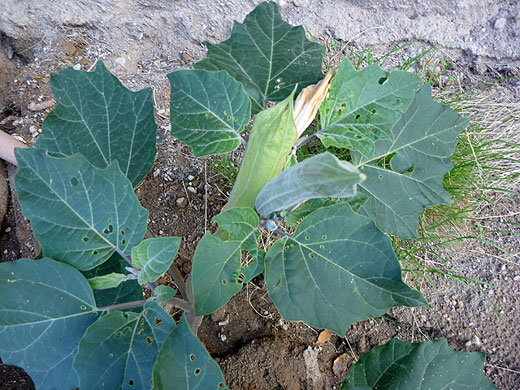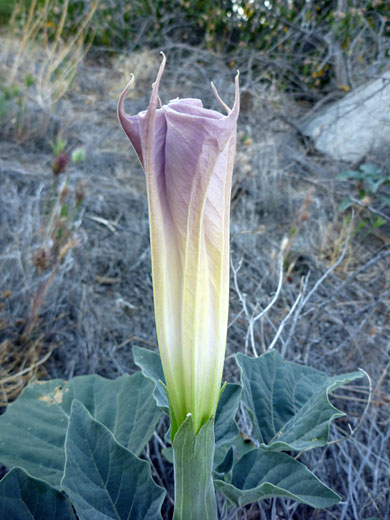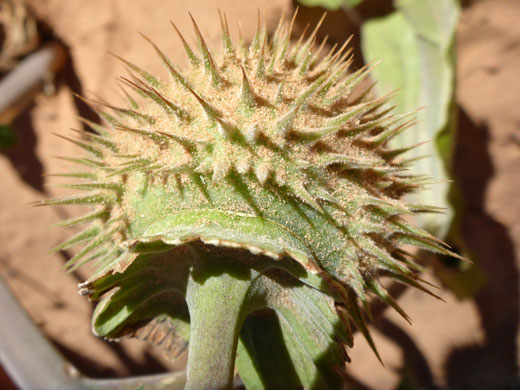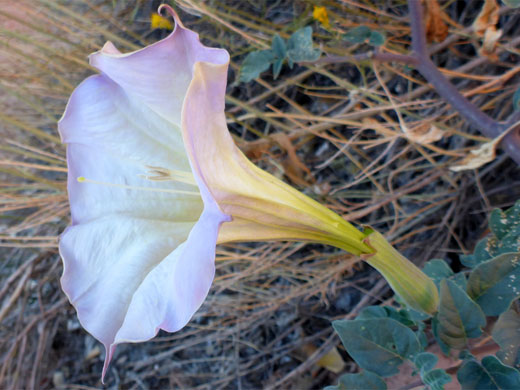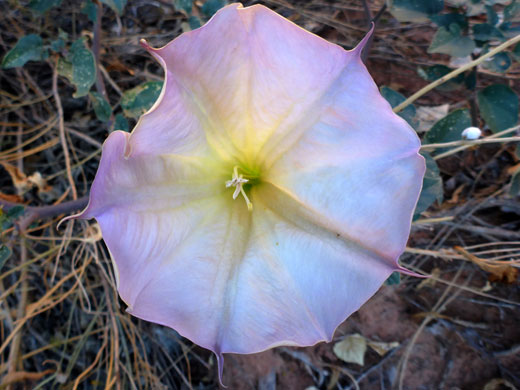Common names:
Sacred datura, Southwestern thorn apple, western Jimson weed
Family:
Scientific name:
Datura wrightii
Main flower color:
Range:
From California, west to Texas
Height:
Up to 5 feet
Habitat:
Canyons and washes, open plains; sandy, well drained locations
Leaves:
Ovate, dark green, with irregularly lobed or wavy edges and prominent, lighter-colored veins. Up to 5 inches across and 10 inches long
Season:
May to November
Datura wrightii produces probably the largest flowers in the west; a tubular white corolla up to 8 inches long, opening to five fused lobes about 4 inches across, each with a thin, narrow, tooth-like projection. The outer edges of the lobes have a pinkish tint, while the bases, and the inside of the corolla tube, are green. Buds are also pinkish, or dull purple. Blooms usually open during the night and start to wither before noon. The plant produces a dense mass of large, dark green leaves which have a very fine downy hair covering and exude a bad smell. The flowers have a pleasant aroma, however. This is a poisonous species, historically used by native tribes as an anesthetic and a hallucinogen.
All Contents © Copyright The American Southwest | Comments and Questions | Contribute | Site Map


